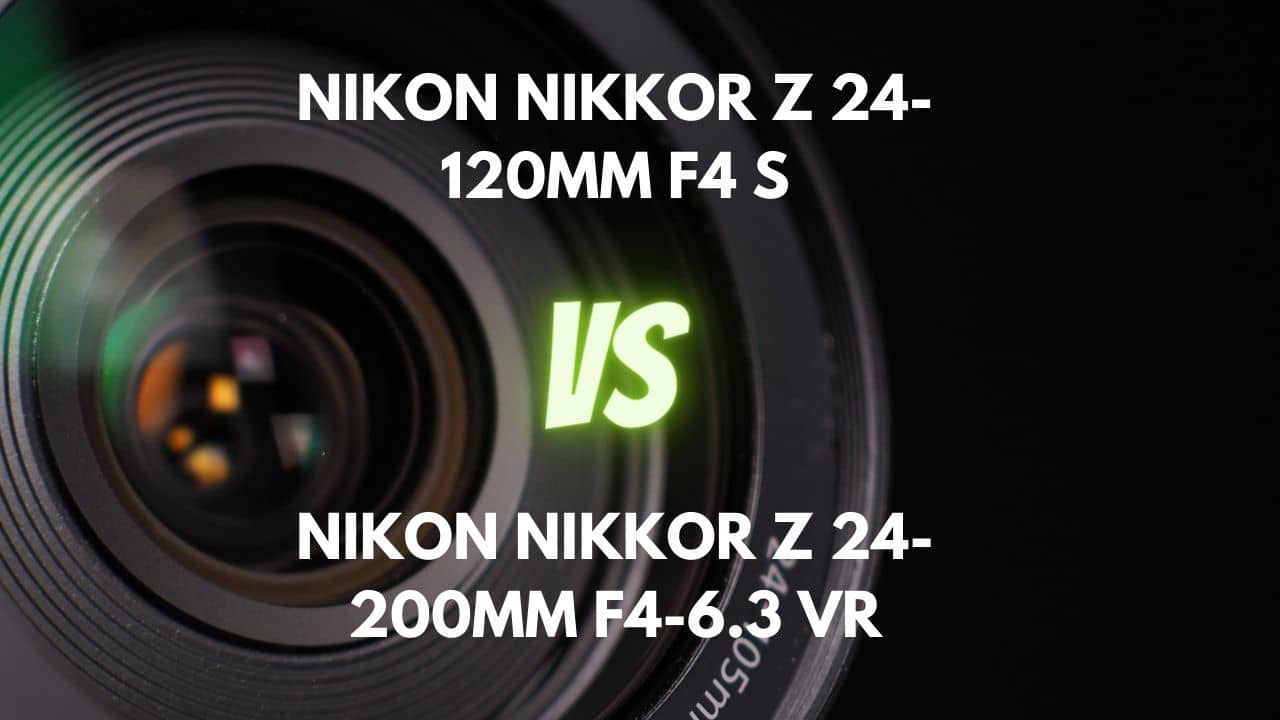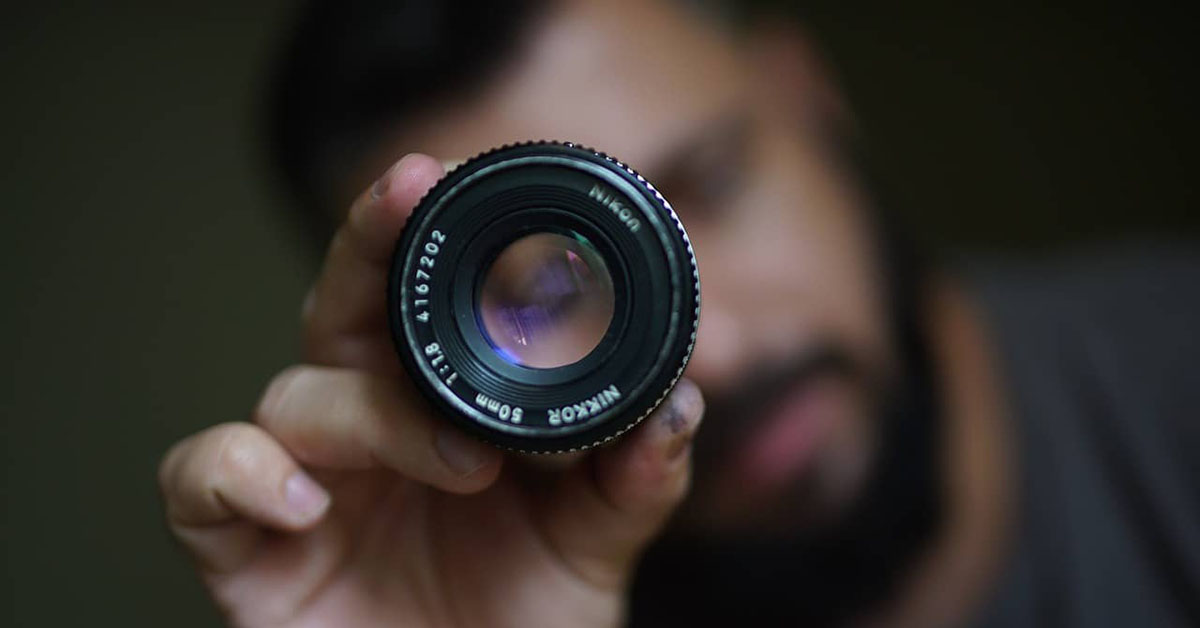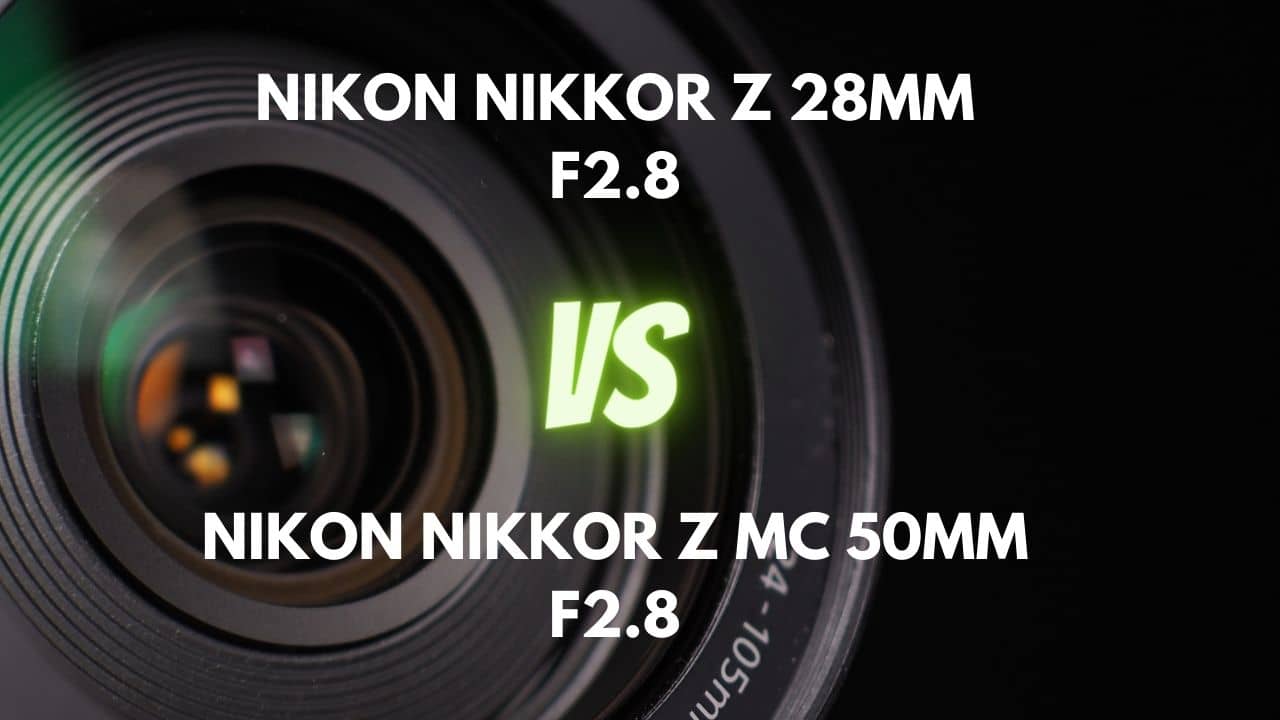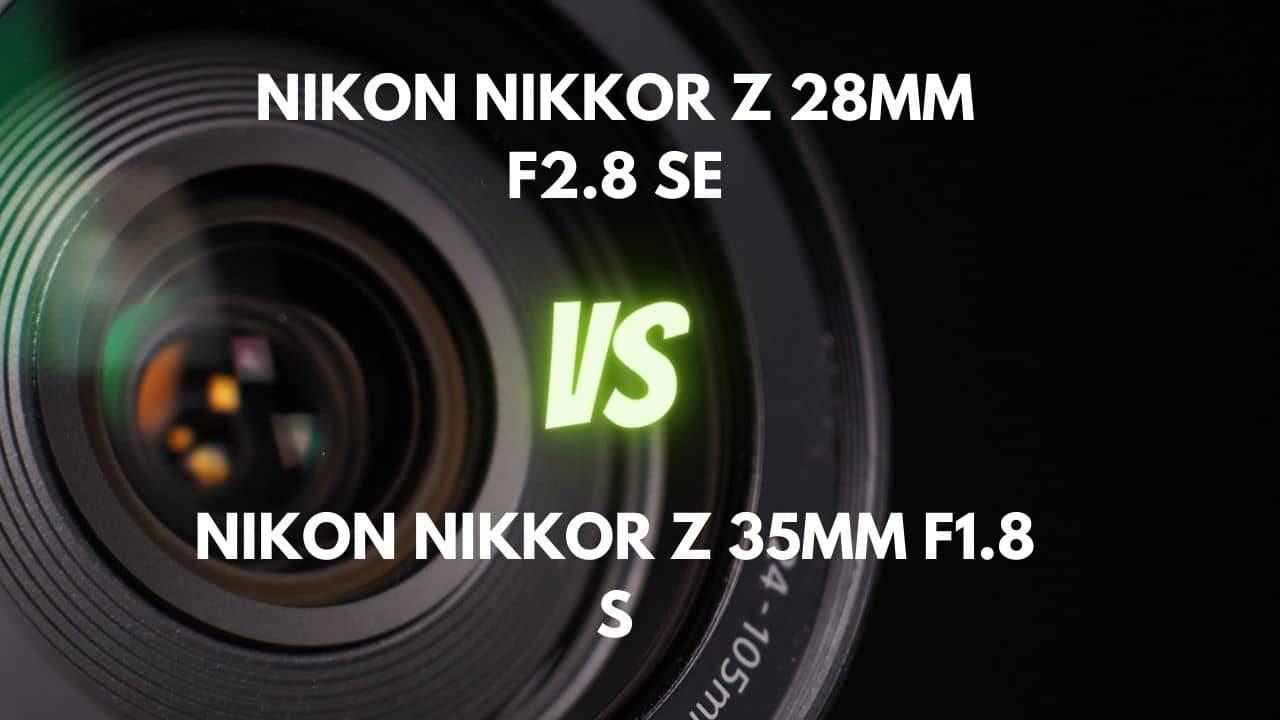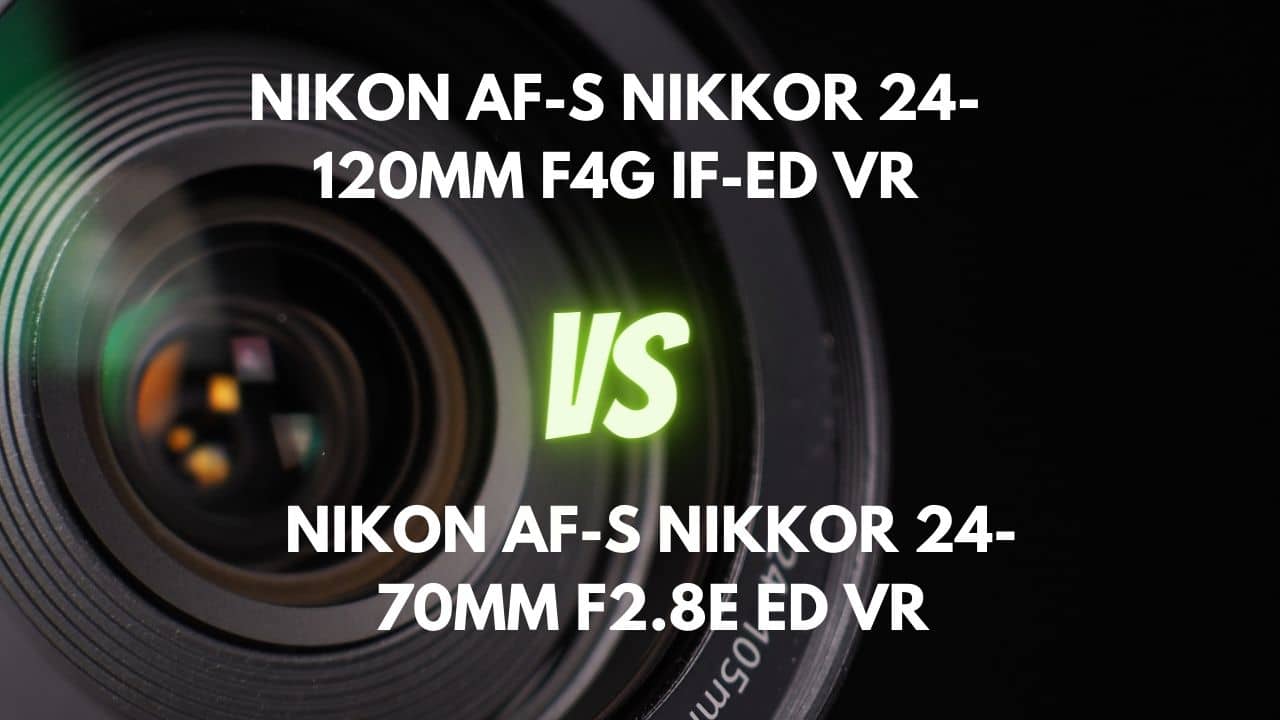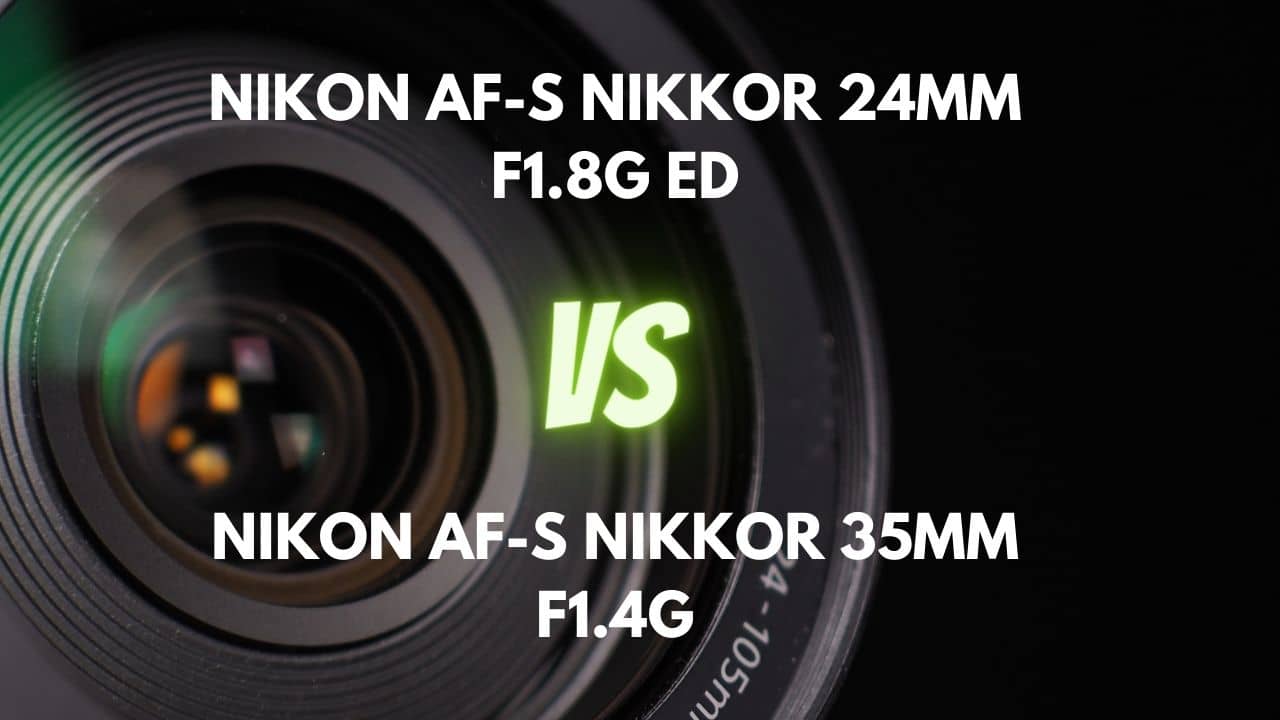Are you an avid photographer seeking to elevate your game, or perhaps a novice on the cusp of diving into the world of professional photography? One of the most crucial decisions you’ll encounter on your journey is selecting the right lens. If you’ve been contemplating between the Nikon 24-85mm f/3.5-4.5 and the Nikon 24-120mm f/4, you’re in the right place.
The importance of this decision cannot be overstated. After all, the lens you choose becomes your eyes in the field, the tool that captures your unique perspective of the world. Whether you’re a street photographer in love with the hustle and bustle of city life, an adventurous travel photographer who needs to pack light, or a wedding photographer seeking flexibility and consistency, the right lens is key to unlocking your full potential.
Our comprehensive comparison of these two popular Nikon lenses will provide you with an in-depth understanding of their performance, handling, and optical characteristics. Not only will this guide help you make an informed choice tailored to your specific needs and style, but it also offers tips on how to get the best out of whichever lens you eventually choose.
So, buckle up and join us on this insightful journey, as we dive into the world of Nikkor lenses, exploring the strengths and nuances of the 24-85mm and the 24-120mm. We believe that with the right knowledge, every photographer, novice or professional, can capture breathtakingly beautiful and meaningful images.
Let’s bring your photographic vision to life!
Overview
| Nikon AF-S NIKKOR 24-85mm F3.5-4.5G ED VR | Nikon AF-S NIKKOR 24-120mm F4G IF-ED VR | |
|---|---|---|
| Max Aperture | F3.5-4.5 | F4.0 |
| Aperture Type | Variable | Fixed |
| Focal Range (mm) | 24-85 | 24-120 |
| Mount Type | Nikon F (FX) | Nikon F (FX) |
| Max Format | 35mm FF | 35mm FF |
| Zoom Ratio (X) | 3.5 | 5 |
The Nikon 24-85mm f/3.5-4.5 features a maximum aperture range of f/3.5-4.5, which means it has a variable aperture. This type of lens can adjust the aperture as the focal length changes, which can offer some flexibility when shooting in different lighting conditions or varying distances from the subject.
However, the maximum aperture shrinks as you zoom in, leading to potential struggles in low-light situations when at longer focal lengths. While this lens does have a wider maximum aperture at the shorter end of its range (f/3.5), this narrows to f/4.5 at the longer end. As a result, this lens can offer some advantages in terms of lower light performance and shallower depth of field at shorter focal lengths, but these benefits diminish as you zoom in.
In contrast, the Nikon 24-120mm f/4 comes with a fixed maximum aperture of f/4.0. This means that the maximum aperture remains constant across the entire focal length range. This is beneficial because it allows you to maintain consistent exposure settings as you zoom in or out, simplifying the shooting process and potentially improving image quality.
In terms of low-light performance, while the f/4.0 aperture may not be as wide as the lower end of the 24-85mm lens (f/3.5), it outperforms the 24-85mm lens at longer focal lengths where the latter’s maximum aperture drops to f/4.5. Moreover, the fixed aperture lens often exhibits better optical quality, resulting in images with better sharpness and less distortion or chromatic aberration.
Another significant difference between the two lenses is their focal range. The 24-85mm lens, with its narrower range, might be more suitable for general-purpose photography, including landscapes, portraits, and event photography. On the other hand, the 24-120mm lens provides a larger zoom range, extending its capabilities into the territory of telephoto lenses, making it more versatile and beneficial for scenarios where a longer reach is needed, like wildlife or sports photography.
Both lenses have the same mount type (Nikon F (FX)) and max format (35mm FF), suggesting they are compatible with the same range of cameras and will offer similar field of view on those cameras.
In conclusion, the superior lens depends on the specific requirements of the photographer. If you prioritize a larger aperture at shorter focal lengths and a lighter, the 24-85mm lens would be a good choice. However, if you value consistent exposure settings across the zoom range, better image quality, and a longer reach, the 24-120mm lens with its fixed f/4.0 aperture and larger zoom range, would likely be the superior option.
Design and Ease of Use
| Nikon AF-S NIKKOR 24-85mm F3.5-4.5G ED VR | Nikon AF-S NIKKOR 24-120mm F4G IF-ED VR | |
|---|---|---|
| Diameter x Length (mm) | ⌀78×82mm | ⌀84×103.5mm |
| Weight (gr) | 485 | 710 |
| Filter Thread (mm) | 72 | 77 |
| Weather Sealing | No | No |
| Zoom Method | Rotary (extending) | Rotary (extending) |
| Distance Scale | Yes | Yes |
| DoF Scale | No | No |
| Hood Supplied | Yes | Yes |
| Hood Code | HB-63 | HB-53 |
The Nikon 24-85mm f/3.5-4.5, with its dimensions of ⌀78×82mm and weight of 485 grams, is smaller and lighter compared to the 24-120mm lens, which measures ⌀84×103.5mm and weighs 710 grams. This can have several implications for photography.
In terms of portability, the 24-85mm lens, being more compact and lightweight, is easier to carry around, particularly beneficial for photographers who travel a lot or walk around for extended periods. This can make the difference in a long day of shooting, as a lighter setup can reduce fatigue and allow for more comfortable handling over time.
The weight and size of the lens also impact the balance of your camera setup. The lighter 24-85mm lens is likely to provide a more balanced feel when mounted on a camera, reducing the potential for discomfort or handling difficulty during longer shoots.
In contrast, the larger and heavier Nikon 24-120mm f/4 might make your camera setup feel front-heavy and potentially unbalanced, which could be an issue for some photographers, especially during extended shooting sessions.
Additionally, storage becomes more convenient with a compact lens like the 24-85mm. It takes up less space in your camera bag, leaving room for additional gear or simply making your bag lighter and easier to carry. Also, when it comes to lens swapping, a lighter lens like the 24-85mm is generally easier to handle, an important factor in fast-paced shooting environments.
In contrast, the 24-120mm lens, with its larger dimensions and weight, might be more challenging to handle, especially for extended periods. However, it’s worth noting that the size and weight of a lens often reflect its optical complexity and build quality. The 24-120mm lens might offer superior optical performance or more robust construction, which could be beneficial for certain photographers or specific shooting scenarios.
In conclusion, the superior lens in terms of size and weight is the 24-85mm, due to its more compact dimensions and lighter weight. However, keep in mind that the choice of lens also depends on other factors such as focal length, aperture, image quality, and your specific shooting requirements. The larger and heavier 24-120mm lens might be a better choice if you require a longer zoom range or potentially better optical performance.
Lens Mount and Barrel
Starting with the Nikon 24-85mm f/3.5-4.5, it features a metal lens mount, which is known for its durability and sturdiness, essential for withstanding the rigors of regular use. This robust construction is enhanced by a rubber gasket that encircles the mount. This gasket acts as a barrier, guarding against dust and moisture ingress into the camera body. These characteristics suggest a thoughtful design that caters to photographers who desire an added layer of protection for their gear.
The barrel of the 24-85mm lens is crafted from high-quality polycarbonate, a type of plastic known for its toughness and lightweight properties. This construction strikes a balance between durability and portability, an essential consideration for photographers frequently on the move. Its exterior has a smooth finish, and the ergonomic bevel ensures comfortable handling. As you zoom, the lens extends towards the longer end of the focal range, altering its physical size. However, the lens benefits from an internal focusing system, which ensures the front element does not rotate or extend during focusing, a practical feature when using filters like polarizers.
Turning to the Nikon 24-120mm f/4, the lens mount is made of chromed brass, a type of metal that is durable and resistant to wear. However, while it does feature a rubber dust and moisture gasket, it’s important to note that the lens itself lacks weather sealing, which might limit its use in challenging weather conditions.
As for the lens barrel, it is primarily composed of black polycarbonate, implying a lighter weight and solid construction. The design is well-finished, suggesting a professional feel. The barrel’s front extends from 10.4 cm to 15 cm as you zoom from 24mm to 120mm, indicative of a well-engineered construction that doesn’t wobble, thus providing a consistent user experience.
In conclusion, both lenses have their merits. If you prioritize a compact, non-extending design with a focus on protection against the elements, the 24-85mm lens with its metal mount and internal focusing system would be a superior choice. However, if your preference leans towards a sturdy and robust build that offers a professional feel and extended zoom range, the 24-120mm lens with its chromed brass mount and well-constructed barrel may suit your needs better.
Weather Sealing
Examining the Nikon 24-85mm f/3.5-4.5 first, it employs a rubber gasket that encircles the metal lens mount. This feature acts as a preliminary line of defense against dust and moisture, thus safeguarding the camera body from these elements. Although the lens is not expressly marketed as weather resistant, the existence of this rubber gasket does offer some level of basic protection against adverse weather conditions. It implies an effort by the manufacturer to enhance the lens’s resilience and longevity, providing a security layer that’s particularly valuable for outdoor shooting or in unpredictable weather.
Turning to the Nikon 24-120mm f/4, it also comes equipped with a rubber gasket located at the lens mount, providing fundamental dust protection. However, it lacks internal seals around critical areas such as the rings, switches, and front of the barrel. This means that, while it does offer some protection against dust and dirt, it might not hold up as well under more challenging weather conditions or in locations prone to moisture exposure.
Both lenses, therefore, provide basic weather protection, primarily centered around the lens mount area. However, neither lens is fully weather-sealed, which implies that while they offer some level of resistance against dust and moisture, they might not perform optimally in harsh weather conditions or demanding environments without additional protection.
In conclusion, photographers should bear in mind that both lenses are not fully weather-sealed, and as such, extra care should be taken when using them in demanding environments or harsh weather conditions. Remember, the longevity and performance of your lens are largely dependent on how well you take care of it, regardless of its inherent protective features.
Rings
Beginning with the Nikon 24-85mm f/3.5-4.5, it possesses two rings: the focus and zoom rings. The zoom ring is strategically placed at the front of the lens and is sufficiently large, which allows for quick and easy adjustments of the focal length. Despite the focal lengths of 24mm and 35mm being slightly packed together on the wide-angle side, which may introduce minor imprecision, the zoom action is noted to be smooth and well-damped with no noticeable zoom creep.
The manual focus ring is located near the camera body and is on the thin side. Although it possesses some slack, making precise focusing at the long end slightly challenging, its short travel path and quiet autofocus operation largely compensate for this. The lens is equipped with an internal focusing system, ensuring that the front element doesn’t rotate, hence making it compatible with polarizing filters. Nevertheless, the lack of depth-of-field marks or an infrared focus index may be a downside for some photographers.
In comparison, the Nikon 24-120mm f/4 also comes equipped with a focus and zoom ring. The zoom ring, a 30mm wide band positioned directly behind the front element, rotates through about a quarter turn to span the focal range of 24mm to 120mm. It’s designed with a deeply ridged rubber grip, providing a smooth touch for easy handling.
The focus ring, located at the lens’s rear, is made of plastic with a ribbed texture that is not as smooth to rotate. This lens exhibits noticeable play between external and internal focusing, which can cause imprecision in manual focusing. Furthermore, it lacks a depth-of-field indicator and extension lock switch on the zoom ring, which might be considered a drawback for certain photographers.
In comparing these two lenses, both offer distinct characteristics in their ring design that may appeal to different photographers based on individual preferences. However, taking into account the overall ergonomics, precision, and control, the 24-85mm lens seems to have a slight edge. Its zoom ring offers a smoother and well-damped action, making quick adjustments easier, while the internal focusing system enhances its compatibility with filters. The ring placement also appears more intuitive and convenient. Therefore, while both lenses have their merits, the ring design of the 24-85mm lens appears to provide a more user-friendly and efficient experience.
Switches/Buttons
The Nikon 24-85mm f/3.5-4.5 sports a straightforward design, incorporating two key switches located conveniently on the side. The first switch, marked M/A and M, toggles between autofocus and manual focus operations. The M/A mode allows for autofocus with the added benefit of manual override, providing the flexibility to fine-tune the focus manually when desired.
In contrast, the M mode operates fully manually. The second switch, dedicated to the Vibration Reduction (VR) system, can be activated or deactivated to stabilize images. It’s worth noting that this lens does not feature advanced VR modes like Active or Normal. These switches are strategically placed for ease of use, offering quick access to critical functions without overcomplicating the lens body. The lens design forgoes additional switches such as focus limiters or macro lockout switches, making for a user-friendly experience.
On the other hand, the Nikon 24-120mm f/4 comes equipped with three slider switches nestled between the focusing ring and the camera body. Similar to the 24-85mm lens, the top switch controls the focusing system, offering M/A and M positions for autofocus with manual override and full manual focus, respectively.
The second switch turns the Vibration Reduction (VR) system on or off to stabilize the lens. Unique to this lens, the third switch allows the user to select between Normal and Active VR modes, providing additional flexibility to match the shooting conditions. The placement of these switches is well thought out, permitting easy thumb access and adjustments without necessitating the removal of hands from the camera.
In comparing these two lenses, the 24-85mm lens is a model of simplicity and ease of use with its minimalistic design. It provides the essential functions without overwhelming the user with multiple options. However, the 24-120mm lens offers more versatility and customization with the additional VR mode switch, which could be beneficial for photographers shooting in varied conditions. Given this, while both have their strengths, the 24-120mm lens edges out its competition in terms of switches/buttons, thanks to its added flexibility and customization.
Filter Thread
The Nikon 24-85mm f/3.5-4.5 is designed with a 72mm filter thread, which is constructed from premium materials. This lens possesses an internal focusing system (IF), which means that the front element and filter thread stay static during focusing. This non-rotating setup permits effortless adjustment of filters such as polarizers, eliminating the need for constant realignment.
In contrast, the Nikon 24-120mm f/4 features a 77mm filter thread, a standard size found on many professional-grade lenses. It’s crafted from metal, signifying a robust and reliable build. Like the 24-85mm lens, this lens also benefits from an internal focusing system that keeps the filter thread from rotating during focusing, providing ease of use with various filters. However, a point of caution when using this lens is the potential for vignetting at the shortest focal lengths when using thick filters. This can be mitigated by using slim versions of polarizing filters.
In terms of compatibility, the 24-120mm lens, with its 77mm filter thread, offers more flexibility. This size is common and offers a broad range of compatible filters. However, the 72mm filter thread of the 24-85mm lens can also be advantageous, particularly if your existing lenses and filters share this thread size, which can be more cost-effective.
Taking into account the materials used, the 24-120mm lens, with its durable metal filter thread, can provide more longevity compared to the 24-85mm lens, especially with repetitive mounting and dismounting of lens filters.
In conclusion, while both lenses have their merits, the 24-120mm lens edges out the 24-85mm lens due to its standard filter thread size and durable metal construction.
Lens Hood
The Nikon 24-85mm f/3.5-4.5 comes with an included HB-63 bayonet lens hood in the box/package. This lens hood sports a petal-shaped design, a popular shape that effectively blocks unwanted light from entering the lens and reduces lens flare. It’s made of high-quality plastic, providing lightweight yet sturdy protection for your lens.
This hood features a distinctive cutaway for enhanced shading. It mounts securely and is free from wobble when attached, adding a layer of stability. Although the hood can be attached in reverse for transportation, it is advised to mount it back in its normal position during shooting as the reversed position can interfere with the zoom ring.
On the other hand, the Nikon 24-120mm f/4 package includes a petal-shaped HB-53 lens hood. It has a ribbed inner surface, an effective design that further reduces light reflections, maintaining image contrast. This hood is specifically optimized for wide-angle distances, providing optimal light blocking across a broad range of focal lengths.
The hood fits around the filter thread and can be reversed for storage, like its 24-85mm counterpart. The lens hood, together with the lens cap, are made of plastic bayonet, a locking design known for its quick and secure attachment. The HB-53 hood adds an additional 4 cm to the length of the lens when attached.
In terms of materials, both lens hoods are made of plastic, offering lightweight protection. However, the bayonet mount of both hoods ensures a secure attachment, reducing the risk of accidental detachment.
Finally, looking at design, the 24-120mm lens hood with its ribbed interior surface might have a slight edge in preventing light reflection, therefore enhancing image quality.
Summarizing, both hoods serve their purpose well, but the 24-120mm lens’s ribbed hood provides a slight advantage in maintaining image contrast.
Focusing and Optical Stabilization
| Nikon AF-S NIKKOR 24-85mm F3.5-4.5G ED VR | Nikon AF-S NIKKOR 24-120mm F4G IF-ED VR | |
|---|---|---|
| Autofocus | Yes | Yes |
| AF Motor | Silent Wave Motor | Silent Wave Motor |
| Rotating Front Element | Does not rotate on focusing | Does not rotate on focusing |
| Min Focus Distance | 0.38m | 0.45m |
| Max Magnification (X) | 0.22 | 0.24 |
| Full-Time Manual Focus | Yes | Yes |
| Focus Method | Internal | Internal |
Focusing Performance
The Nikon 24-85mm f/3.5-4.5 offers a generally quiet, fast, and accurate autofocus performance, which is attributed to its Silent Wave Motor technology. This results in an almost silent focusing process, enhancing the overall user experience. The lens can focus from infinity to 0.38m in about 0.8 seconds and to 0.85m in approximately 0.6 seconds, demonstrating a decent speed. Additionally, the lens performs well even in low-light conditions, maintaining autofocus accuracy. The initial autofocus acquisition speed is quick, efficiently locking onto subjects.
This lens also provides a manual focus override for instant adjustments as needed. However, the manual focus action, while smooth, does have a slight slack, which may make precise focusing at the long end slightly more challenging. Like its counterpart, this lens employs an internally focusing design, keeping its length constant regardless of focus and zoom settings.
Meanwhile, the Nikon 24-120mm f/4 also features a Silent Wave Motor, ensuring a very quiet autofocus operation. Its focusing speed is similar to the 24-85mm, taking around 0.8 seconds to go from infinity to 0.45m, but is slightly quicker to 0.85m, taking only 0.5 seconds. The lens focuses accurately in most situations, including tracking large mammals and people, although it might struggle with fast-moving subjects.
A manual focus override is available at all times for instant adjustments, even when the lens and camera are set to autofocus. The front element does not rotate during focusing due to its internal focusing design. However, the manual focus action is less smooth due to some play in the coupling with the actual focus unit, potentially posing challenges when trying to achieve critical focus, especially in Live View. In low-light situations or with low-contrast subjects or close-ups, the lens may exhibit some hunting and slower focusing.
In summary, both lenses offer commendable focusing performance with their respective strengths. The 24-85mm lens is praised for its smooth manual focus action and reliable autofocus performance even in low-light situations. Conversely, the 24-120mm lens excels in quicker focusing to 0.85m and offers a robust performance in tracking subjects, though it might struggle with fast-moving objects and in low-light conditions.
Optical Stabilization
The Nikon 24-85mm f/3.5-4.5 incorporates Nikon’s second-generation Vibration Reduction (VR II) system, offering up to four stops of stabilization, although field tests show that three stops are more typically achieved. The VR II system operates quietly and stabilizes the image in the viewfinder swiftly with minimal lag.
This feature is quite effective in various scenarios, such as low-light conditions or when shooting at the longer end of the focal range. The lens allows for slower shutter speeds, as slow as 1/10 sec exposure at 85mm, which is about three stops slower than the commonly accepted guideline for hand-held shooting. This feature improves image sharpness and compensates for camera shake.
On the other hand, the Nikon 24-120mm f/4 utilizes Vibration Reduction technology, promising up to four stops of camera shake compensation. The VR II image stabilizer, which adjusts the floating elements with an almost imperceptible buzzing, is activated when the camera’s shutter button is half-pressed.
The lens offers two stabilization modes: Normal and Active. Normal mode compensates for small, quick vibrations, while Active mode compensates for all movements, whether fast or slow. Both VR modes allow the stabilizing effect to be observed through the viewfinder, and the lens operates quietly during autofocusing. The VR II system performs as advertised and aids in capturing sharp images at slower shutter speeds, especially beneficial for low-light photography.
In comparing the two lenses, both offer up to four stops of stabilization with quiet operation and rapid stabilization visible in the viewfinder. However, the 24-120mm lens provides an extra advantage with its dual stabilization modes, catering to different shooting scenarios. On the contrary, the 24-85mm lens has proven its effectiveness in field tests, easily achieving up to three stops of longer shutter times.
In conclusion, both lenses offer robust optical stabilization, but the 24-120mm lens’s additional stabilization mode makes it slightly superior, providing more versatility to photographers.
Image Quality
| Nikon AF-S NIKKOR 24-85mm F3.5-4.5G ED VR | Nikon AF-S NIKKOR 24-120mm F4G IF-ED VR | |
|---|---|---|
| Special Elements | 1 ED glass element, 3 aspherical elements | 2 ED glass elements, 3 aspherical lenses, Nano Crystal coat |
| Diaphragm Blades | 7 | 9 |
| Circular Aperture | Yes | Yes |
Aberration
The Nikon 24-85mm f/3.5-4.5 does show noticeable chromatic aberration, especially at its shortest focal length of 24mm, where it reaches nearly 4 pixels in the extreme corners. This aberration is a color fringing effect that appears along contrasty edges and can detract from image quality. However, as you increase the focal length and aperture, chromatic aberration levels diminish to more acceptable figures, demonstrating better performance.
Longitudinal chromatic aberration, a type of aberration causing color fringing before and after the plane of focus, is managed relatively well by this lens. It is also worth noting that chromatic aberration can be mitigated during post-processing using software like Lightroom and Photoshop.
On the other hand, the Nikon 24-120mm f/4 also presents noticeable lateral chromatic aberration, particularly within the 24-50mm range. This aberration appears as purple or blue fringes along high-contrast edges, particularly in the corners. However, similar to the 24-85mm lens, this can be addressed in post-processing. The lens performs well in terms of axial chromatic aberration, likely due to its non-extreme aperture.
Despite these aberrations, the lens still offers good sharpness, contrast, and color reproduction, indicating that these aberrations do not significantly affect the overall image quality. Closing down the aperture can further reduce chromatic aberration and enhance the overall image quality.
In comparing the two, both lenses exhibit noticeable chromatic aberration at certain focal lengths, but these can be corrected in post-processing. However, the 24-85mm lens controls chromatic aberration better as the focal length and aperture increase. Meanwhile, the 24-120mm lens handles axial chromatic aberration better, despite showing noticeable lateral chromatic aberration.
In conclusion, if the focus is on aberration control, the 24-85mm lens appears to have a slight edge due to its better performance as the focal length and aperture increase. However, both lenses offer good aberration control and can produce high-quality images when used correctly.
Sharpness
The Nikon 24-85mm f/3.5-4.5 delivers solid center sharpness, reaching its optimal performance between the f/5.6 and f/11 aperture range, dependent on the focal length. However, the corner sharpness is less impressive, particularly at wider apertures, but does see improvement upon stopping down the aperture.
The peak performance is typically observed between f/8 and f/16. When the aperture is wide open, the sharpness is somewhat lacking, especially in the corners. However, as the aperture is decreased, the sharpness improves, with the highest sharpness generally found within the f/8 to f/11 range.
The Nikon 24-120mm f/4, on the other hand, exhibits excellent center sharpness, particularly at shorter focal lengths and when the aperture is decreased to at least f/5.6. Similar to the 24-85mm, the corner sharpness improves when the aperture is decreased, with the best performance usually observed around f/5.6 to f/8. However, at the longest focal length of 120mm, the lens experiences a significant resolution drop, with corners lacking sharpness even when the aperture is decreased.
The optimal overall sharpness across the frame is achieved when the aperture is decreased to f/8 or f/11, while diffraction may cause a minor decrease in sharpness at f/16 and f/22. The sharpness at wide open apertures varies according to the focal length, but it is generally good at shorter focal lengths and weaker at longer ones.
In comparing the two, the 24-120mm lens excels in center sharpness, particularly at shorter focal lengths and when the aperture is decreased, whereas the 24-85mm lens achieves solid center sharpness across a broader range of apertures. However, both lenses show decreased sharpness in the corners at wider apertures, which improves upon decreasing the aperture.
In conclusion, if sharpness is your primary consideration, the 24-120mm lens performs slightly better in terms of center sharpness, especially at shorter focal lengths. However, both lenses can provide satisfying results in terms of sharpness when used correctly, demonstrating their versatility across different focal lengths and aperture settings.
Bokeh Quality
The Nikon 24-85mm f/3.5-4.5 displays a mixed quality of bokeh, with certain pleasing attributes as well as some disadvantages. The incorporation of a 7-blade rounded iris diaphragm contributes to a relatively smooth and acceptable foreground bokeh. However, the bokeh in the background can show signs of outlining, which imparts a restless visual effect. The lens’s relatively smaller maximum aperture of f/4.5 additionally restricts its capacity to generate strong subject isolation and a more appealing bokeh.
On the contrary, the Nikon 24-120mm f/4 creates a bokeh that is typically smooth and pleasant, particularly at longer focal lengths. However, a certain amount of outlining can be observed in the foreground and background, contributing to a slightly uneasy effect. The background highlights retain their circular shape across the aperture range, but might show some outlining when the aperture is fully open. While the quality of the bokeh might not be extraordinary, it is generally sufficient for a variety of situations, particularly for close-up shots at the f/4 aperture setting.
In comparing the two, both lenses demonstrate some outlining in the bokeh, which can result in a somewhat unsettled effect. The 24-85mm lens has a 7-blade rounded iris diaphragm that aids in creating a somewhat smooth bokeh, while the 24-120mm lens maintains a circular shape for background highlights across the aperture range.
In conclusion, if bokeh quality is a primary consideration, the 24-120mm lens has a slight edge as it generally produces a smoother and more pleasing bokeh, particularly at longer focal lengths. However, it’s important to remember that the bokeh effect is not solely determined by the lens, but also by the shooting technique and conditions, and both lenses could serve well in the right circumstances.
Flare/Ghosting
The Nikon 24-85mm f/3.5-4.5 generally manages flare and ghosting effectively, especially when contrasted with older lenses that lack advanced coating. However, it might not deliver performance at par with some of the Nikkor lenses that are treated with a Nano-coating.
Under specific conditions that induce glare and ghosting, this lens is capable of producing minimal or even no ghosting, reflecting satisfactory performance. It’s noteworthy that the introduction of low-quality glass filters or shooting through a glass window can heighten the issues of ghosting and flare. Depending on the bright source’s positioning, these optical problems can be virtually eliminated, especially when no filters are used.
In comparison, the Nikon 24-120mm f/4 provides somewhat mixed results in relation to flare and ghosting, even though it is equipped with a Nano Crystal Coat. Flare and ghosting are not entirely eradicated, requiring careful placement of the sun within the frame. Utilizing filters might further enhance the issues of flare and ghosting. However, when the aperture of the lens is narrowed down, flare and ghosting are effectively controlled, and in certain instances, are entirely absent.
On comparing the two lenses, both demonstrate a certain degree of susceptibility to flare and ghosting, especially in challenging lighting conditions or when filters are employed. The 24-85mm lens shows respectable performance in minimizing these optical issues under most conditions, while the 24-120mm lens offers excellent control over flare and ghosting when the aperture is stopped down.
Conclusively, while both lenses exhibit a fair capacity to manage flare and ghosting, the 24-120mm lens edges out slightly, due to its effective control over these optical issues when the aperture is stopped down. However, one should note that careful handling, such as avoiding low-quality filters and being mindful of the light source positioning, can help in further reducing these issues in both lenses.
Vignetting
The Nikon 24-85mm f/3.5-4.5 displays substantial vignetting, especially at 24mm and the maximum aperture, with the corner darkness reaching up to 4 EVs. Reducing the aperture to f/5.6 or smaller apertures significantly diminishes vignetting, yet it remains discernible at shorter focal lengths.
As the focal length extends, vignetting becomes less conspicuous, with the minimum light falloff occurring at the longest focal lengths. For wide-angle lenses like this, vignetting is generally more pronounced at shorter focal lengths because the light rays must travel farther to reach the sensor’s corners, causing a gradual decrease in brightness from the center towards the edges.
Contrastingly, the Nikon 24-120mm f/4 exhibits visible vignetting at 24mm when shot wide open, with corner darkness exceeding 3 EV at f/4. Nonetheless, reducing the aperture significantly decreases vignetting at all focal lengths. At 35mm, vignetting is minimal, but it becomes more noticeable at 50mm and slightly reappears at 85mm.
The effect lessens as you zoom in, and the camera can correct dimmed corners when shooting in JPEG, making the uniformity of illumination much less problematic. Although this lens does have some vignetting, it can be easily rectified with post-processing or camera settings. For telephoto lenses, vignetting is typically more important at longer focal lengths because the larger lens elements mean that light rays have to travel through more glass to reach the sensor, leading to light falloff towards the corners of the image.
Comparing the two lenses, both exhibit vignetting, particularly when used wide open at their shortest focal lengths. However, the 24-120mm lens controls the effect better at all focal lengths when the aperture is reduced.
In conclusion, the 24-120mm lens has a slight advantage over the 24-85mm lens regarding vignetting, mainly due to its better control when the aperture is reduced. Regardless, in both lenses, the vignetting can be reduced in post-processing or by stopping down the aperture, depending on the photographer’s preference.
Distortion
The Nikon 24-85mm f/3.5-4.5 is characterized by substantial distortion, especially at the wider 24mm setting, with barrel distortion measured at a high -3.70%. As the lens zooms towards longer focal lengths, the distortion transitions from barrel to pincushion, becoming perceptible around 35mm and intensifying considerably at 85mm. This level of distortion is typical for economical zoom lenses, but it can be mitigated through post-processing software such as Lightroom or Photoshop.
On the other hand, the Nikon 24-120mm f/4 also displays noticeable distortion, with barrel distortion at the shortest 24mm zoom setting and pincushion distortion prevalent in the 35-120mm range. However, the distortion is relatively consistent across the board and is straightforward to correct in post-processing.
In terms of distortion, both lenses manifest similar characteristics: barrel distortion at wide angles and pincushion distortion at longer focal lengths. The primary difference lies in the intensity of distortion, with the 24-85mm lens showing a higher level of barrel distortion at 24mm compared to the 24-120mm lens. However, both lenses offer the possibility of distortion correction in post-processing, which can mitigate this issue to a large extent.
In conclusion, while both lenses exhibit distortion that is correctable in post-processing, the 24-120mm lens may offer a slight advantage due to its more uniform distortion across its focal length range.
Final Verdict
The Nikon 24-85mm f/3.5-4.5, with its wider aperture at shorter focal lengths and lighter weight, is an excellent choice for photographers who prioritize portability and low-light performance, such as street and travel photographers. Its superior control over chromatic aberration at increased focal lengths and apertures also makes it a worthy consideration for landscape and portrait photography where image clarity and color accuracy are critical.
On the other hand, the Nikon 24-120mm f/4, with its consistent exposure settings, superior image quality, and longer zoom range, is more suitable for event and wedding photographers who need versatility in a single lens to cover a wide range of scenarios. The lens’ commendable center sharpness and pleasing bokeh quality give it an edge for portrait photography, while its robust construction and extended zoom range make it a solid choice for professional use across various genres.
In terms of focusing performance, the 24-85mm lens excels in low-light situations, making it ideal for event and indoor photography. The 24-120mm lens, with its quicker focusing and robust subject tracking, is better suited for outdoor and sports photography where subjects may move unpredictably.
In terms of optical stabilization, the 24-120mm lens’ additional stabilization mode offers versatility, especially beneficial for videographers or photographers shooting in challenging light conditions or with slower shutter speeds.

